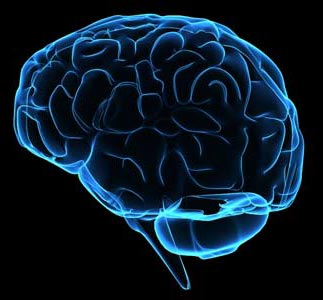Method of hypothermia in treating brain damage
Lowering the temperature of children to limit injury from head injuries does not seem to work, but this is still common now.
Emergency room doctors treating children with severe head injuries often lower their body temperature in the hope of limiting their brain swelling. But a new study found that children were not cooling better than children treated at room temperature.
In this process of deliberate hypothermia, doctors place fluid bags on the chest and legs - as researchers do in experiments - or cold fluids. Both of these ways lowered body temperature by a few degrees. Hypothermia can promote recovery of wake-up patients after a heart attack. Surgeons also cooled patients to prevent brain damage in complicated heart surgery or stroke, when blood flow needed to be temporarily interrupted.
But for people with brain damage, this way results in conflicting results. In this new work, doctors at trauma centers throughout Canada, England and France confirmed that 205 children hospitalized from 1999 to 2004 suffered brain damage. Under parental consent, the researchers randomly selected half to perform hypothermia for 24 hours. During the treatment, the child's body temperature was lowered to 32.5 degrees C.
Children who have hypothermia are also likely to die after 6 months or suffer from serious medical problems (including plant life or severe disability) such as children who do not cool down, according to researchers. June 5 in the New England Journal of Medicine.

(Photo: static.howstuffworks.com)
In addition, patients who had hypothermia had to cope with blood pressure spikes more frequently than others, often during reheating.
However, according to co-author James Hutchison, a special care physician at Toronto Children's Hospital, these findings do not eliminate the cooling method. Instead, they question the optimal way to cool a child or any person with brain damage.
Hutchison said, 'We still don't know if it works. All to protect the brain. ' Hypothermia reduces the metabolism of the brain, eases the need for oxygen and glucose and reduces the risk of the brain suffering from these deficiencies and begins to lose brain cells.
Brain damage is difficult because each patient is different, according to pediatric neurosurgeon David Adelson, University of Pittsburgh. The head is a 'sealed box', and the spinal fluid, blood or inflammatory cells can contribute to swollen brain. Hypothermia seems to actually reduce blood flow to the brain and soothe brain functions.
But how to make the effect of hypothermia work well on patients is still elusive. For example, patients in the new building face many deferral postponements that reduce their chances of benefiting from it. Some people have to wait until 19 hours to cool down.
Adelson is leading another study examining children treated within 6 hours of brain injury.'We are trying to intervene in conditions that lead to swelling and injury.'
Meanwhile, people still do not know how long a patient needs to be cooled.The maximum brain swelling can last from 48 to 96 hours. Many Japanese doctors have cooled the brain patient for a week.
The council in Pittsburgh and another board in New Zealand will cool children longer than 24 hours.
Doctors first noticed the protective effect of hypothermia when people resurrected after the heart stopped showing signs of a better recovery in rare cases where they fell through rocks and regained consciousness. The science of thermostats has been taken seriously around the 1950s, forgotten for a while, then revived when surgeons found it to help limit brain damage during surgeries. heart open.
- Why do people take their clothes off when they are about to freeze to death?
- Find new ways to erase painful memories
- New method for treating neuropathic pain
- Lack of vitamin E can cause brain damage
- Finding new ways to treat brain damage
- Probiotics help heal brain damage
- New method of treating brain tumors does not need to open the skull
- Explain the mysterious phenomenon of
- Reproducing brain damage by microchip
- New direction in treating heart damage
- Shocking facts about the human brain
- Finding the gene helps rejuvenate the brain
 Green tea cleans teeth better than mouthwash?
Green tea cleans teeth better than mouthwash? Death kiss: This is why you should not let anyone kiss your baby's lips
Death kiss: This is why you should not let anyone kiss your baby's lips What is salmonellosis?
What is salmonellosis? Caution should be exercised when using aloe vera through eating and drinking
Caution should be exercised when using aloe vera through eating and drinking